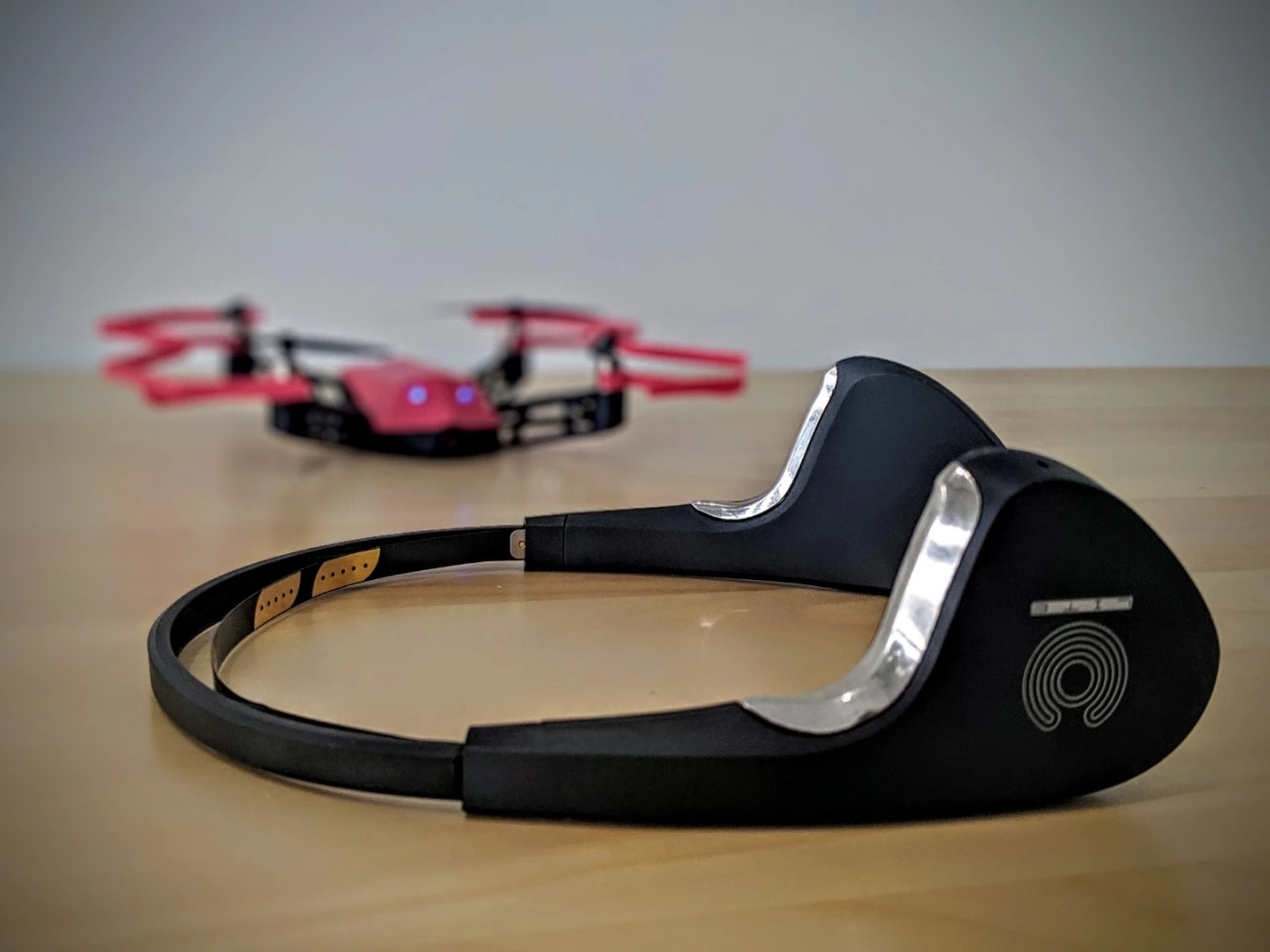How much more fun could drones be if you got fiddly hand controllers out of the way and flew them with your mind? That's the question EEGSmart poses with its UDrone mini-quad, which responds to brainwaves and head movements instead of thumbsticks. It's not perfect, but it does give a glimpse of a mind-controlled future.
The Udrone itself is fairly unremarkable; it's a lightweight mini-quadcopter with 2-inch props, nice plastic bumpers to save it from damage when it bumps into a wall, and an 8-megapixel, 1080p-capable camera. You can fly it using your mobile phone, in which case it works like most similar small quads, but also has some smarts under its belt with face tracking, subject tracking and gesture recognition.
It flies for six or seven minutes on a battery, which is about right for this size of thing. The camera isn't anything to write home about, but it streams video back to your phone in real time as long as you're within Wi-Fi range. So far, so ordinary.

In a second box, you get EEGSmart's UMind Lite headset, and here's where things get interesting. The headset has a number of sensors built in. There's an EEG, or electroencephalography sensor, which measures electrical activity in the brain. There's an EOG, or electro-oculography sensor that measures eye movements by monitoring the electrical potential between the front and back of the human eye. There's an EMG, or electromyography sensor, that measures electrical activity in response to a nerve's stimulation of muscles. It also has gyros and accelerometers, and patented gear built in to amplify signal and squash noise from the finicky brain and nerve sensors.
It charges via USB, like the drone itself, and sits over the ears across your forehead, just above your eyebrows. You pair it to your phone through the UDrone app, and then set the drone into "mind control mode" to activate it.
To launch the thing, you have to attain a state of Jedi-like focus. Which is fine, I've been doing my Sam Harris meditation tapes. You can watch your mental focus activity summarized into a number in the UDrone app. If your thoughts are a little skittery, you might find that number hovering around 15 or 20. When you zen out into a space of relaxed focus, it rockets upward. I've seen as high as 400 or so, which made me feel like Yoda.
To launch the drone, you pop it into mind control mode, then focus your way to 150 or more, and the drone lifts off to a chest-high hover. Focusing hard on the drone can convince it to rise, letting your mind wander makes it fall, in little stepped levels.

To move it, you tilt your head. This feels extremely intuitive for right-to-left movements, and works really well; the drone tilts whichever way you tilt your head. EEGSmart has decided, however, to reverse things for forward and backward flight – probably thinking that you want to be looking up rather than down as your drone is flying forward. I thoroughly disagree with this assessment and would much rather the drone simply tilted whichever way I tilt my head.
Yaw control is done by turning your head sideways then back again, and this happens in 45-degree increments. You blink twice to start the camera timer, and clench your jaw when it's time to land.
After burning through half a dozen battery charges, I'm definitely getting the hang of it. Altitude control is by far the hardest and least responsive control, since it's difficult to know exactly when you're building or shedding focus, but the drone does eventually do what you want. The head tilt control works great – it'd be even better if the forward/backward inputs weren't reversed – and while the camera does fire off a lot of shots without me asking for it, I've done pretty well with the landing command. Here, check out a short video. Pardon the bare feet, I'm a hippie at heart:
It's a pretty nifty feeling controlling a drone this way. It does suffer from being very digital –especially the stepped altitude changes and 45-degree turning implements, which are not a smooth way to fly. But it does give you a real sense of what hands-free flight could feel like, and as such we'd rate it a fun little toy to have around.
It's quick enough to learn that you can pass it around for visitors to play with, and the prop guards do a good job stopping this thing from banging off the walls. You'll want to fly it indoors, too, because wind does blow it around a bit, and that can be hard to correct for without the rock solid thumbstick controls you'd normally be using.
I do see a future in this kind of thing. I think UDrone should build some sort of training feature into the app, which lets you watch your control inputs in real time so you can make sure of exactly what signals you're sending. That'd make the learning curve quicker without burning battery on the drone. It's a pretty remarkable little gadget to play with, and I look forward to seeing where this kind of tech goes.
Udrone will launch on Kickstarter on March 12, at an early bird price of US$279 for the UDrone + Umind kit.
Source: EEGSmart









